In the first of my articles on the Cube format, I laid down the groundwork for why you might want to get into draft, and what sorts of drafts there are. Moving forward, these articles will introduce you to the various kinds of drafts, and I want to kick it off with one of my favorites: the Set Cube- and further, the Refined Set Cube. This is going to be a longer piece, as I'll be walking you through the process of building a Set Cube and how I came to the decisions that are reflected in my Refined Set Cube.
Mark makes the case for draft as the premiere format for Flesh and Blood, laying the groundwork for his series on constructing a FaB Cube.
by: Mark Chamberlain
These varieties of Cube differ from the traditional formula, and frankly, that's just to be expected. Cube isn't necessarily about tradition! There are recipes and formulas; suggestions and guidance; influencers and trendsetters; There's a ton of room for creativity in Cube!
In light of all that, the Set Replica Cube is actually pretty formulaic. In Set Cube, we are seeking to replicate the draft format available in booster packs. We are NOT trying to do this to undercut our LGS and their ability to sell seats in draft events; rather, this is my way of practicing drafts before they become competitively relevant.
As sets go out of print, too, the Set Cube becomes ever more relevant. What if you want to draft Tales of Aria for years and years to come, the way I do? Well, you could keep buying boxes, even as it shifts out of factory production and goes ever higher in price. Yeah, a questionable prospect... which is why I recommend making a Set Replica Cube.
Building the Cube/Building the Packs
So let's run the numbers! This formula is going to hold true for Welcome to Rathe, Arcane Rising, Monarch, and Tales of Aria, which comprise all of the Base Sets thus far. You will need to acquire (or proxy, or what have you) the following:
- 1* every Legendary or Fabled card in the set (I always proxy these, but you don't have to)
- 1* every Majestic
- 2* every Super Rare (if they are present)
- 3* every Rare
- 5* every Common that appears in the equipment slot (this includes the amulets in ToA)
- 6* every Common that appears in the non-equipment slots
From there, for Welcome to Rathe, you can create these 9 piles:
LF: 1*each Legendary and Fabled card in the set
R+: 1*every Majestic; 2*every Super, 2*every Rare
R: 1*every Rare (marked subtly on the face to facilitate sorting)
EQUIP: 5*every Common equipment
CLASS (these are separate pods):
- Guardian: 6* every common class card
- Brute: 6* every common class card
- Ninja: 6* every common class card
- Warrior: 6* every common class card
GENERICS: 6* every common Generic card
Shuffle each of the 9 piles separately. I usually put them in to a BCW Shoe Box with dividers, so I can keep each of these piles easily separated in their own places. Neatness counts here, because it can get super super messy, really quickly.
After shuffling the piles, we can make packs like so, taking the appropriate number of cards from each pile:
- 4*GENERIC
- 1*R
- 1*R+
- 2*Each CLASS, for a total of 8
- 1*EQUIP
Then, I randomly select 1 pack from every 24 built, remove its equipment card, and slot in 1 card from the LF pile.
You can use the same method for Arcane Rising- obviously, replacing the WtR classes in the instructions with ARC classes.
For Tales of Aria and Monarch, you sort these cards in to the following 8 or 9 piles:
LF: 1*each Legendary and Fabled card in the set
R+: 1*every majestic; 1*every rare
R: 2*every rare (marked subtly on the face to facilitate sorting)
EQUIP: 5*every common equipment; 5*each amulet
CLASS (these are separate piles):
- Guardian & Elemental Guardian: 6* every common class card
- Runeblade & Elemental Runeblade: 6* every common class card
- Ranger & Elemental Ranger: 6* every common class card
----------------
- Illusionist & Light Illusionist: 6* every common class card
- Brute & Shadow Brute: 6* every common class card
- Runeblade & Shadow Runeblade: 6* every common class card
- Warrior & Light Warrior: 6* every common class card
----------------
TALENT: 6* every common Elemental, Ice, Earth, and Lightning // Light, Shadow, and Generic card, all in one pile
Each of these piles needs to be independently shuffled. Packs are then built as such:
- 6* TALENT
- 2* each CLASS, for a total of 6
- 1* EQUIP
- 1* R
- 1* R+
After building these packs, I select 1 pack for every 20 packs built, take out its equipment card, and randomly insert 1 from the LF pile.
No matter what the cube is, I also keep 8 sets of tokens for each class and 32 cracked baubles sleeved up. This way, no matter what shenanigans happen in your draft, everyone is covered- even if everyone forces the same class! (Looking at you, Briar.)
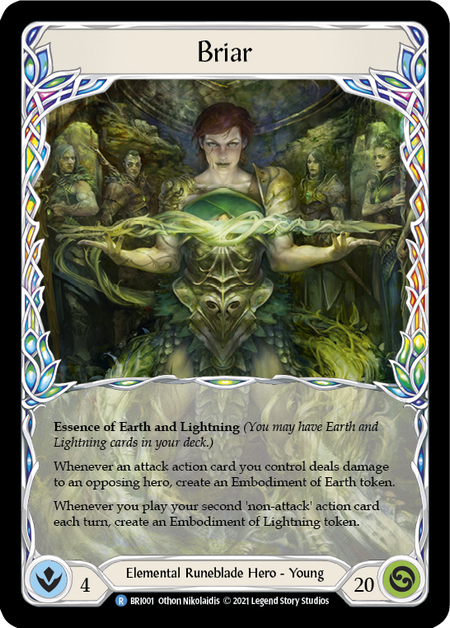
Practical Considerations
WHEW! Now that we've gotten through the incredibly fun formulas- all of the building and shuffling and sorting and AaaAaAAaRGHh!- we can finally draft just like we had sealed packs of an official retail set.
I always sleeve my cubes. I prefer DragonShields, but you can use whatever you are comfortable with. There's no shame in using penny sleeves- I just prefer the shuffle of the premium sleeves. I do use sleeves for a few reasons here:
- To protect the cards
- To hide the proxies
- To ease up the shuffle
When you are shuffling hundreds of cards together, sleeves can make that nigh-impossible task perfectly manageable.
For these Set Cubes, I don't bother to put actual Legendaries and Fables in- I just proxy them up using the images found on Legend Story Studios' website and my at-home inkjet printer. The easiest way to implement this is to just slip the papers in front of the cards in the sleeve.
(I do collect all of the F's and L's in the sets, but I don't put them in my Cubes unless it's a special occasion or I just want to "Flex on 'Em"- they would make up 90%+ of the value of the cube, and you only use 1 or 2 of them when you make packs. For me, it's just not worth it.)
Another step that I take when I am packing up my cubes is to put the packs in to Team Bags. Lots of companies make these, and I don't think that there is a best or worst one: they've all treated me just fine. This way the cube is ready to go for some future date! I save the Team Bags and reuse them until they become unappealing- usually 4 or 5 drafts. These are cheap, and they add just one more layer of verisimilitude to the draft experience: it's just so cool to rip into packs!
For the sake of sustainability and environmental friendliness, however, I have begun to transition to generally more recyclable ways of stuffing cube packs. Although you can reuse team bags a few times, they do start to tear and show signs of wear pretty quickly. A couple of companies make reclosable boxes for just this purpose, and although they all have their own unique upsides and downsides, they are a stretch more environmentally friendly than ripping through plastic wrappers. For now, I use old Dragon Shield sleeve boxes to store cube packs in, three at a time, separated by off-color sleeves such that the packs don't flow into one another.
Making the Cube Your Own
A Refined Set Cube is purpose-built, but it's a lot less rigid than the Set Replica Cube. For one, you don't have to make all those ding-dang piles, or respect rarity whatsoever.
Since you aren't really using the built-in guiderails of retail set design, it can be really helpful to have guiding principles when designing a cube. When you are considering what cards to include or exclude, it can be easy to get lost in the weeds. I always try to set a few Design Rules so that when I have to make those considerations, I have Top Line Demands that I want to meet; and if a card doesn't meet those demands or actively works against them, that card doesn't get included.
With that said, you don't need a whole bunch of rules to hit every edge case scenario: you just need some signposts so you don't lose yourself along the way. These are the principles that I am using going forward with this Refined Set Cube:
- Make every class worth drafting.
- Only use cards from WtR.
- Every pick should feel good/tough.
- Keep it medium powered.
That's it! As much as I want to include cards from Arcane Rising (lookin' at you, Cadaverous Contraband), or Crucible of War (Hit and Run? Gambler's Gloves!?), that's just not the target of this Refined Set Cube.
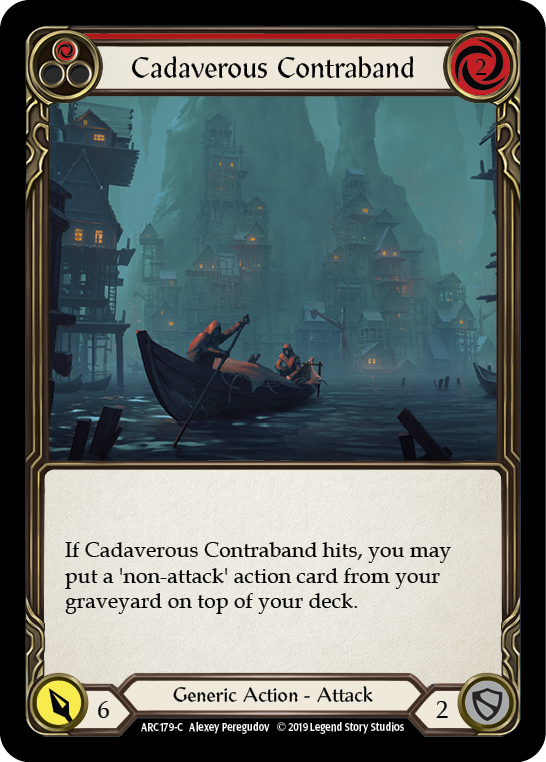
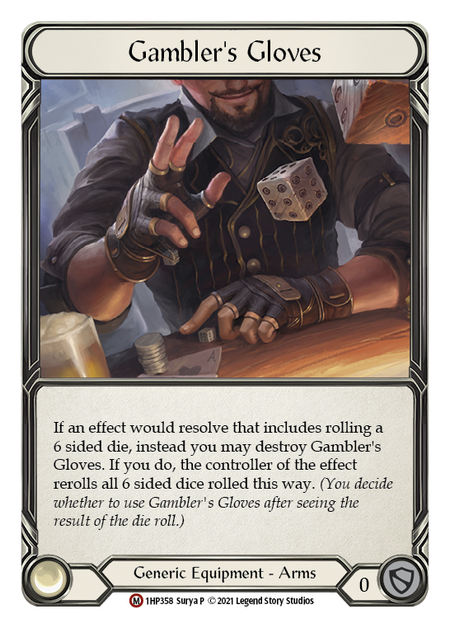
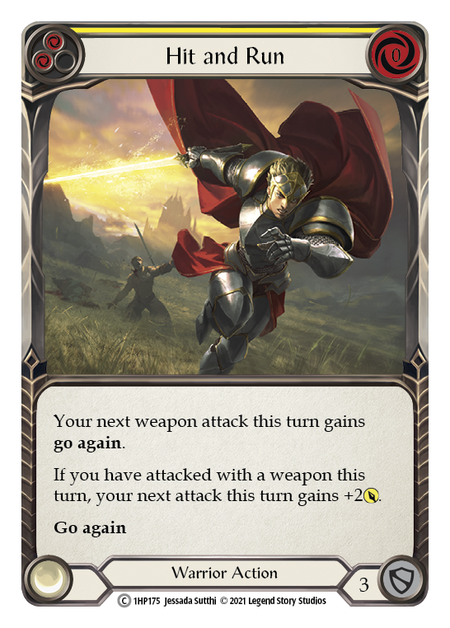
Notably missing from that list? “Faithfully replicate the WtR draft experience.” See, that's the job of the Set Replica Cube. Your whole target there is to replicate the official, retail draft. Not so here: I want to make every character worth drafting, without relying on the self-balancing mechanism found in draft.
Something that I have noticed- something that other players and I have conferred over- is the overdrafting of Bravo, and the underdrafting of Dorinthea, in WtR Retail Draft. I, in my hubris, am setting out to fix this. Maybe you will choose differently in your own cube- maybe you want to just cut a class altogether, especially if they are already underdrafted. For me, I want to have that... je ne sais quoi, that "I don't know what" of having an absolutely stellar WtR draft where each of the 4 heroes come out of the gate swinging, and nobody's quite sure who's going to make it to the top table of round 3.

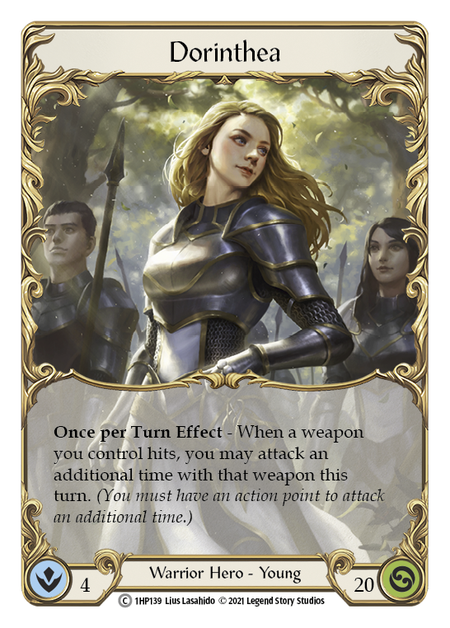
It's true that there is a self-balancing aspect to Draft, and I don't want to just completely ignore it. Some designers would say that some of these problems I am facing are nigh-undefeatable. After all, no matter what you do, one card from every pack is going to be Pick One, and one card from every pack is going to be Pick Fifteen. Some of the cards are just going to be better than others, no matter what, and really we want it to be that way anyhow. Nevertheless, we persevere! We will strive to make a Very Good Draft Cube. Hopefully, even if all the players find and stay in their lanes and even do the occasional hate draft pick (wherein you take something you don't need, but especially don't want to face across the table), I want each drafter to have a shot at getting a functional deck in to their hands.
One of the things that was discussed in Article One was the importance of knowing the various decks in the format. Well, here on the design side of things, we get to decide what the decks in the format are by way of selecting what cards go in the set. Part of this process is cutting away, and some of it is buffing up. In a traditional Cube, like found in other card games, all 360 cards would be singleton, only one copy of each. Well, like the Set Replica Cube that came before, we don't have that restriction about our necks: some of these cards are going to need to be upped in count, and likewise some will be hitting the cutting room floor.
One major factor to this, of course, is that there just aren't enough cards to do that with. In fact, when looking at the breakdown of WtR, it becomes apparent that, perhaps, LSS had been looking out for us cubists all along. There are 132 commons and 48 rares, making for 180 cards. A quick and dirty 360 cube might just see you collecting two of each of the commons and rares, and calling it a day! That encompasses 24 equipments and a decent selection of goods to pick over. It's a fine experience, even: but I found the draft to be lacking. I don't want to have to draft the blue Sigil of Solace, or the blue Sink Below. In fact, I don't want anyone to have to do that- and that's where the customization comes in.

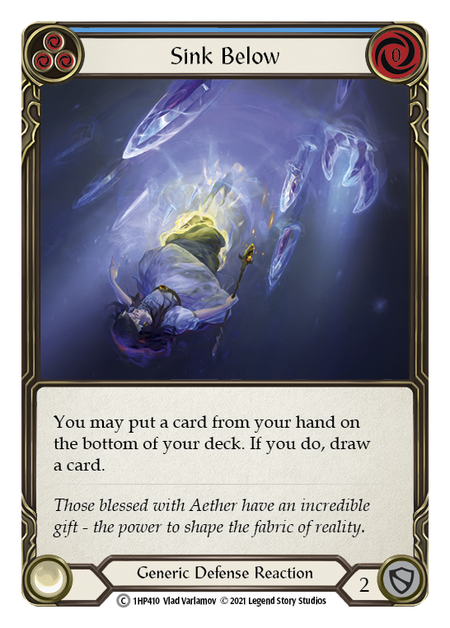
Since we are sticking with a 360-count, the numbers we get to play around with are relatively fixed. Normally, usually, roughly, across 24 packs of WtR, excluding the 24 foils, you'll see 24 pieces of Equipment, 2 Majestics, 4 Supers, 42 Rares, and 264 commons; among those commons, roughly 42 will be Warrior, 42 Guardian, 42 Ninja, and 42 Brute, with the remaining 96 common cards being Generic. The foils are typically distributed such that you get two “money” cards, some combination of cold foil, foil majestic, or foil super, five to eight foil rares, and about 14 foil commons. For the sake of ease, we are going to stuff those rare and foil cards pretty evenly into the extant categories, giving us the following formula to start with: 24 Equipment, 48 Guardian, 48 Brute, 48 Ninja, 48 Warrior, and 144 Generic cards.
In our Refined Set Cube, we aren't going to bother with rarity rules or the re-collating of packs to mimic a retail release, but we will be using these numbers as a general guideline. The set was designed for draft, after all, so we can use some their numbers as a rule of thumb to start. Instead, we will just have two sets after we are done selecting cards: one pile of 24 equipment, and one giant stack of 336 other cards. Packs will be simple: 1 equipment card, and 14 cards from the Big Stack.
Part of making every class draftable is going to be found in tweaking what is available to each class, while keeping ratios pretty similar across the board. One plan that I have to make each class draftable is to figure out what makes each class work in the draft format. I've noticed that the decks work quite differently if you have access to your Legendary Equipment- and it's not always healthy for the draft if, say, Guardian gets their L and nobody else does. In the spirit of making every class draftable and keeping it medium powered, L's probably won't be making it into the final cube list- certainly not for every class.

The WtR draft format is a lot like smaller-deck blitz. The decks are largely Classed Good Stuff: there isn't a coherent combo strategy in WtR draft. There's just Tight Plays and Good Cards vs Bad Cards. Well, we want to cut down on the number of bad cards that players draft- I want every pick to be tough, after all.
Let's talk about the archetypes and cards that will be available at the table. Choosing archetypes is going to inform our card choices, and vice-versa: the two are quite linked. The archetypes I have identified for the standard WtR draft are all midrange- there aren't any crazy draft combos (like Spider Spawning from Magic: the Gathering's Innistrad or what have you). There is the ever-present self-sustaining threat of Drone of Brutality, but I'll tell you now that I have no intention of including that card in this Cube. We are going to lean more into fun and making each class draftable, instead of pushing everyone to the limits like we would in a Power Cube.

In addition to his class card pool, Bravo will also take just about any blue Generic card, even if it seems totally outside of his deckspace, simply because it will swing Anothos and usually also block, making any random blue Generic generally better than a Cracked Bauble at the end of the Draft. There are a few cards that he might prioritize, like Unmovable, Sink Below, Pummel, Energy Potion and the like; and he pays special attention to the costs of cards if he has already drafted Blessing of Deliverance.
Bravo has such an easy time chipping in damage: he typically can draft a mostly blue-line deck that blocks efficiently and swings the hammer. This deck is pushed even further by the presence of Red-line attacks that create efficient break-points, such as Crush Confidence and Cartilage Crush. We want Bravo to still feel like Bravo, and to lean in to his own cardpool more. As such, we aren't going to be including as many Blue Generics that Cost 3+, as they tend to mostly only serve Bravo; there will be fewer good redline attacks available, as well, since Bravo does not need help getting in chip damage.

Beyond the class cards, a Rhinar player is also on the lookout for the following generics: Last Ditch Effort, Timesnap Potion, Energy Potion, Demolition Crew red, Raging Onslaught yellow, Sloggism and Regurgitating Slog, red and yellow Wounded Bull, Pummel, Sink Below, and Sigil of Solace.
Rhinar, largely, is looking for ways to trigger his textbox by discarding cards with 6+ attack. One of the ways that we are going to make Rhinar more appealing to drafters is by having a critical mass of relevant 6+ power attacks for him to draft and later discard. If Rhinar ends up being too efficient and consistent, then we will tweak with this. As it stands though, we are increasing the red and yellow counts of generic attacks instead of increasing blue counts, because Rhinar and Bravo can both make use of the Red and Yellow ones but Bravo exclusively benefits from the blues.
Pairing this information with the perception that Bravo is overdrafted and Rhinar is underdrafted, the clear choice at this juncture is to increase the Brute's consistency without simultaneously increasing Bravo's. Thankfully, Brute cards are usually less resource-intensive than Guardian cards, since they tend to also cost an additional random card from hand; so keeping those 6+ counts high and blues low will be easy to achieve.
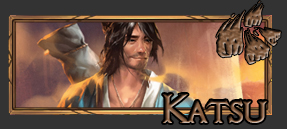
Katsu has three combo lines available to him in his class: the Head Jab line, the Leg Tap line, and the Surging Strike line. This Ninja is also scouting packs for these neutrals: Razor Reflex, Nimblism/Nimble Strike, Energy Potion, Sink Below, Scar for a Scar, Snatch, Flock of the Feather Walkers, and even Wounding Blow.
Katsu does like his combo lines, and splitting his attention across three combo lines is, I think, detrimental to his performance. I'm going to try cutting the punch combo, except for blue Head Jab, to try and increase his draftability. If players see blue zero-cost cards going around the table, alongside a powerful suite of Kick combo and Lord of Wind combo cards, then they should be naturally drawn in to that pool of cards. There aren't exactly enough to go around, of course, so they'll still be fighting over the cards- and one of the Ninja players will likely be able to find refuge in the neutrals like the Nimble Strike combo if they happen to be in a particularly bad seat for Ninja.
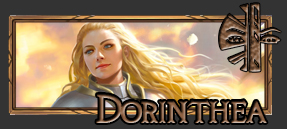
Dorinthea has a slew of reactions and run-ups in her core kit, including game-ending cards like Rout and Steelblade Shunt. Warrior also makes good use of neutral cards like Flock of the Feather Walkers, Scar for a Scar, Energy Potion, Nimblism/Nimble Strike, and Snatch.
Dorinthea is so underdrafted, I have participated in two separate WtR drafts where she was entirely ignored as a draft option- everyone at the table gladly took the dreaded Baubles into our anorexic decks instead of picking up a single Warrior card with intention and purpose. This should not be! As such, we're going to pile in some love for Dorinthea, so that hopefully players see her cards going around the table and take a second moment to think about their preconceptions regarding Warrior in draft. I think that some of the most powerful tools for Thea include her Majestics and Supers, so we are going to be including those alongside all-star performers like Driving Blade, Ironsong Response, Warrior's Valor, and Steelblade Shunt. Ideally, her draft decks are going to be little monsters, so we're definitely going to give the other classes their defense reactions so that they don't get absolutely eaten alive by her. Rout can be a real blowout card, and although I am including it here to amp up Thea's power, I am going to keep a close eye on it to make sure that Dori isn't winning all her games several turns too early.

Generics.
We want these to mostly serve two or three heroes, and not all four; plus we want power to be medium still. It is good to have Generics that allow players to stay open in the early parts of a draft, but not so open that they can delay choosing a class without being left behind. There should be powerful picks here, but not so powerful that they keep anyone from choosing/finding their lane. From our analysis of what cards are available/looked for by each of the heroes, we can increase the number of relevant generics, decrease the irrelevant generics, and make the draft just a little bit more thoughtful in the process by making each of the picks a little bit harder.
It's pack two: do you take that first red Sink Below, Dorinthea, or are you reaching for your second Glint the Quicksilver? Are you really going to pass that blue Wrecker Romp to the right, when you know you didn't see any good Brute cards in the first round of draft? Neither of the first two will wheel, ideally, since the other Thea drafter at the table will be excited to take the Glint, and anyone will be snapping up the Sink, and someone on your right is about to be so so happy that you passed them a blue Wrecker Romp... that's the idea, anyhow!
A big part of retail drafting is finding your equipment- or really, just raw scarcity in general. As such, for the Refined Set Cube, we are going to keep the equipment to 1-per-pack. This does mean that we will have to maintain those two piles of cards, since we don't want equipment to pile up in a single pack by chance, but this has shown to be worth it.
I originally toyed with the idea of giving each hero a suite of equimment, but that really steps away from the soul of the draft- you should be given some opportunities for failure, after all. If you just always drafted the same decks and the same things, then the draft would get rather boring over time, and you might as well be playing constructed with the draft decks instead of spending an hour splitting the decks out via the draft mechanic. Some of the fun in a draft is not always getting everything you need, ranging from equipment to finishers. It can be frustrating to get your whole deck hate drafted, but in such a tight drafting environment, you should be able to pivot in to whatever deck that your hate-drafter is letting slip through their own fingers.
This is but one of the fine lines that we have to balance: there should be enough decks and deck ideas available that players can pivot and pirouette around their opponents at the draft table, if one is skilled enough to do so.
Using these tenants, I crafted an initial list and set to work with testing. I drafted with locals, I did phantom drafts online, I even got in a Winston draft with a friend, and it was a lot of fun! But I did come away from those tests with notes, and now I wish to present to you the current iteration of the Welcome to Rathe Refined Cube Draft.
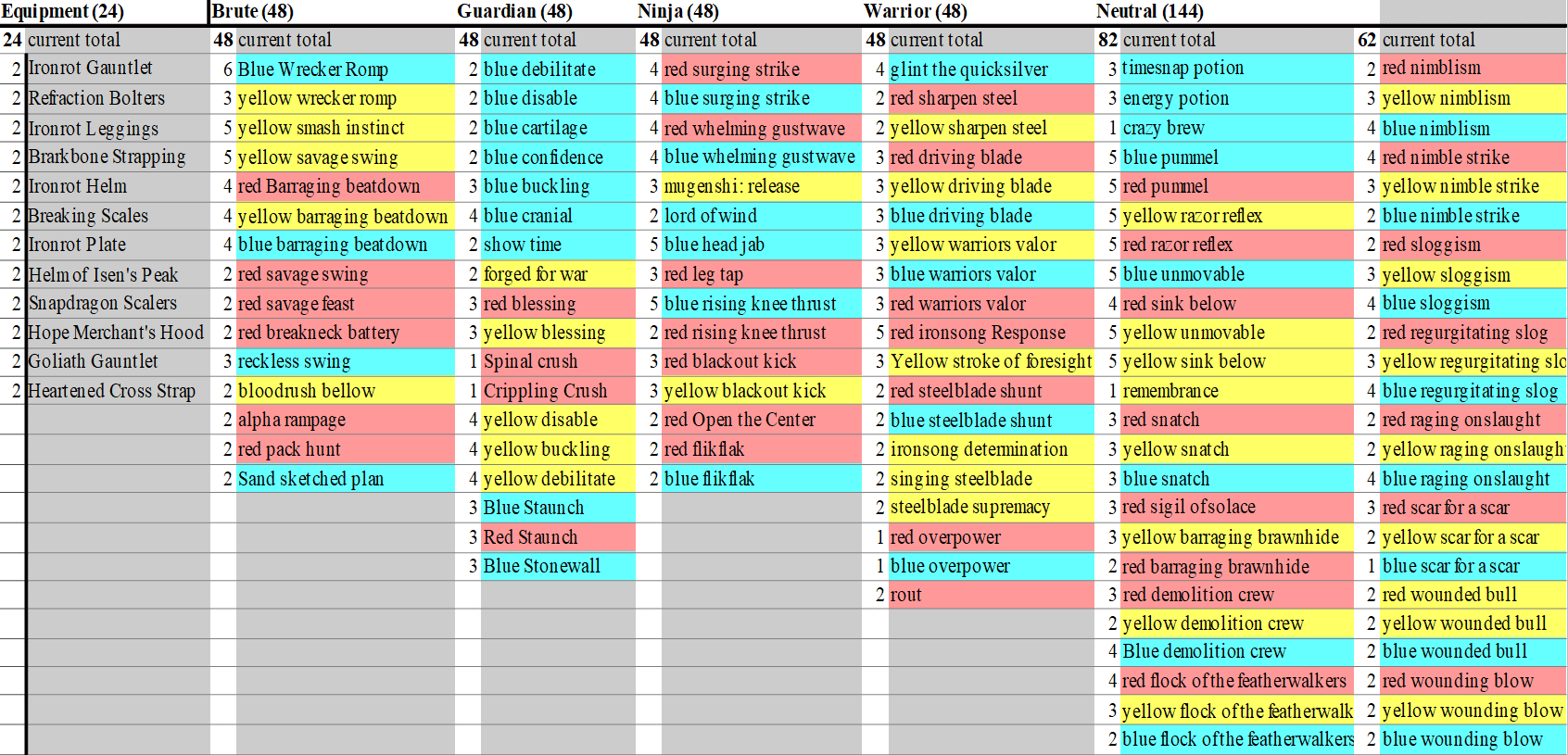
Players who were new to the Cube experience, but also had prior experience in drafting WtR, found some difficulty in re-evaluating the state of the cube on their initial drafts. Even after players made their adjustments, however, I found that my original list could do with some refining.
Bravo was still pretty overdrafted, even as Warrior Majestics and various class staples flowed around the table. I reduced the number of blues available to Bravo in general, such that two drafters would be very pleased to be in Bravo but if 3 or more players tried to draft him they would all be punished. This is supposed to be true in draft normally, but there were just so many relevant blues for the showstopper that sometimes you would have a pod with 4 bravo drafters, and one of them would go on to win even in the face of two opponents who had no opposition at the draft table.
Those increased Warrior Majestics and rares were another key factor to ensuring that the players were paying attention to all of the classes. Rout can be a game-ending blowout card, and anyone passing it along should frankly conisder otherwise: having 2 in the cube should make sure that the people who see that card will start to really weigh their options re: playing Warrior. The same goes for the 4 copies of Glint the Quicksilver, plus the 9 Driving Blades and Warrior's Valors.
When I draft Brute, I always have so much fun picking up all the unnoticed Barraging Beatdowns, and that's definitely something that I wanted to have present in the draft experience. The more the merrier (to a point), as it gently nudges players in to playing this widely under-played class. Reckless Swings were upped as well, just to make sure that even if one were hate-drafted away the Brute player could win on the defensive.
The changes and buffs that came to Ninja showed up as a solidifying of the lines: I ended up cutting the Super Rare finishers in favor of having more consistency in other combo lines. Almost half of the cards in the 48 are dedicated to the Lord of Wind line, about a third of the cards are dedicated on the Leg Tap line, and the remaining cards are Flik Flak and blue Head Jab, with 2 red Open the Centers to act as dominating finishers. Although I respect that all of the various combo lines are fun and good in their own right, I found that being able to consistently do a very powerful combo line was more enjoyable than sometimes not getting the right pieces for a chosen combo line. This may go through further refinement, but for now the Leg line is backup to the Mugenshi line, and the general strategy is supported by blue Head Jab with Open the Center acting as a finsiher.
The neutrals have been tweaked again and again, and I think it's really approaching a comfortable place. There are a good number of defense reacts, but I've reduced the number of Sigils significantly so that games are still knock-down drag-out fights that see every scar as earned and seldom refunded.
Looking Forward
Stay tuned here at the Rathe Times for all of your strategy wants and needs. After the ProQuest and Skirmish seasons die down, you can look forward to my powered cube that incorporates cards from almost every set to deliver a powerful drafting experience. If you have any experiences in cube that you'd like to share, drop them down in the comments below. Cube is an art and a science, and I am always looking to improve on my techniques. If you have any contributions, critiques, etc that you want to share, I want to hear about it!





